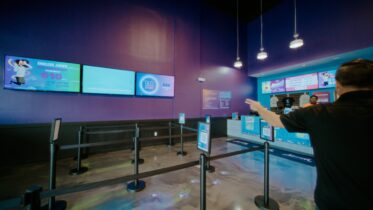From booking reservations and presenting boarding passes on smartphones and tablets, to receiving flight updates and checking bags at a self-service kiosk, passengers have eagerly accepted technology to speed up their travel time.
Enabled by air travel technology and self-service kiosks, today’s air passengers are connected and independent, and want to move continuously without delay, according to the 2015 Global Passenger Survey from the International Air Transport Association (IATA) and PwC. Here’s a breakdown of what’s gaining in popularity today.
Consumers Are Willing to Pay for Self-Service Options
Technology has streamlined many processes — from banking to shopping and entertainment — and consumers now expect to be able to use their smartphones and tablets to gain control of their journeys and avoid long lines at the airport.
Today, having to check in to a flight and display a boarding pass to airport security and at the gate are expected. But passengers want more — and many are willing to pay for additional services. In fact, the IATA survey found that 48 percent of passengers purchased additional airline products or services. The top three most popular transactions were paying for a checked bag or excess luggage, preferred seating and onboard food and beverage.
Passengers expect to have unlimited access to information about their travel, and they want to be updated with any changes. Most passengers want flight status updates, and three-quarters of passengers also want to know the status of their baggage and its delivery time. Regulatory updates such as visa information are also popular. Interestingly, more than half the passengers surveyed preferred to be notified via text message rather than through an app or other channel that requires Internet connectivity. Being high-tech is less important than the timely delivery of key information in an easy-to-use, universal format.
Onboard the aircraft, 45 percent of customers said they are willing to pay for Internet and in-flight entertainment (IFE), and 35 percent are willing to pay for Internet service only. Access to media on personal devices is also a potential revenue stream, as 14 percent reported willingness to pay for stored media and 10 percent would pay for live TV streaming.
Big Data Drives Travel Technology Development
Continued development of travel technology will create opportunities for greater personalization and control. For instance, 70 percent of respondents would like to choose and order their meals through the IFE system, the survey reported. The preference is mixed for using personal devices or IFE devices for interaction. Nearly 50 percent of North Asian passengers prefer to use their own devices for viewing digital content rather than IFE equipment, according to the survey. However, this trend is less popular among passengers from North America and Asia Pacific, who may be more likely to use onboard IFE gear to supplement or replace their personal devices.
Entertainment, sleeping, eating and drinking are easily the top activities while in the air. In fact, on both short- and long-haul flights, passengers enjoy watching movies and TV more than anything else. Powered by the connectivity, airlines can provide an omnichannel experience for their customers, using data to deliver a seamless interaction that flows from mobile device to gate agent to self-service kiosk and back.
As passengers make more use of technology, airlines can use big data to deliver a consistent travel experience by tracking patterns of repeat passengers. Analytics of customer preferences can also be used to build a knowledge base of demographics, spending habits and shopper profiles. This can then be used to provide custom services that provide passengers with the ability to stay productive while in the air.
The IATA Fast Travel program has a goal of offering 80 percent of global passengers a complete service experience to address passenger demands for more control, choices and convenience. This will be done through the power of self-service kiosks, mobile devices and air travel technology.
Want more information on transportation technology trends? Subscribe in the box to the right.








